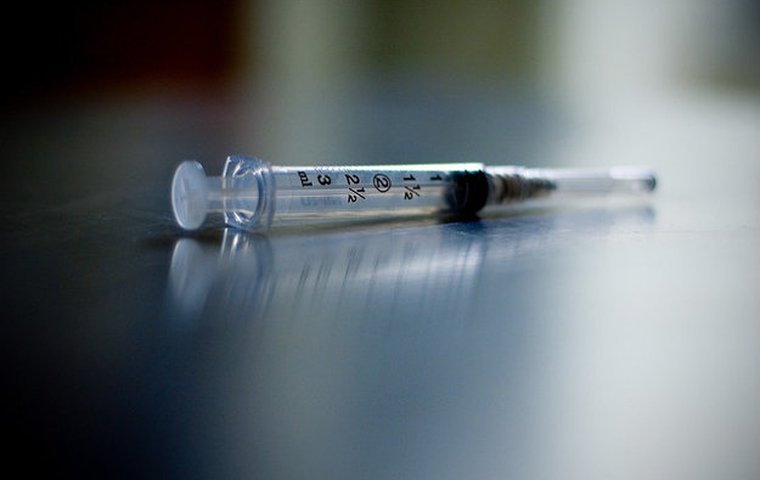
Use of anabolic steroids is among the most high-profile medical issues in racing today. The cases of trainers Mahmood Al Zarooni and Gerard Butler in Britain and jumps trainer Philip Fenton in Ireland have prompted major policy re-thinks by the world’s racing jurisdictions - and most of them have come down hard in a bid to rule out steroid use completely. But what’s the big deal? Are steroids really such a bad thing? Absolutely, says Peter Webbon, one of the world’s most respected equine vets for the past 30 years.
Anabolic steroids are the most widely abused performance enhancing drugs in the world. They are unequivocally banned from human sport, both in and out of competition, and there is a logical argument that the same should be true in equine sport, including racing.
What are anabolic steroids?
Steroids form a large, diverse group of substances with a common, basic, cyclic-ring formula. The addition of active side chains to the basic formula produces compounds as varied as cholesterol, testosterone (anabolic steroid), and dexamethasone (corticosteroid).
Anabolic steroids, more correctly known as anabolic-androgenic steroids --whether naturally occurring or synthetic -- such as stanozolol, all mimic, to a greater or lesser extent, the effects of testosterone. They have two main actions: the first is anabolic, stimulating cell growth, and the second is virilising, increasing masculine characteristics. Examples of their anabolic effects are increased protein synthesis, increased appetite, increased bone remodelling and growth, and stimulation of bone marrow, which increases the production of red blood cells. Anabolic steroids stimulate the formation of muscle cells and hence cause an increase in the size of skeletal muscles, leading to increased strength.
Anabolic steroids have been available as oral preparations, injections, and patches since the 1930s. In humans, they have been used at physiological doses to treat, or assist in the treatment of, various conditions such as age-related muscle weakness and delayed puberty, although they have now largely disappeared from clinical medicine.
The use of anabolic steroids as growth promoters in food animals (including horses) was banned by the EU in 1988, and as a consequence, formulations authorised for use in large animals largely disappeared from the European veterinary market. There are no conditions in horses for which anabolic steroids are specific treatments, although some would argue that they may have a benefits such as speeding recovery after major surgery. Even if this were the case, the rationale for their use would not be sufficiently compelling to argue against a complete ban in all horses intended for, or competing in licensed racing.
The abuse of anabolic steroids
As widely reported in the sporting press, some human athletes cheat by taking anabolic steroids. In general, they are taken at high doses to increase muscle mass, strength, and aggression, so they are especially effective in power sports such as sprinting and weightlifting. Additionally, by increasing appetite and speeding recovery, they allow athletes to train harder. Modern drug testing facilities are capable of detecting a range of anabolic steroids at very low doses, but athletes who are determined to cheat are tempted to seek out “designer steroids” intended to evade detection. An example of such a drug is THG (tetrahydrogestrinone), which was widely abused and only became detectable because the U.S. Anti-Doping Agency (USADA) was provided with a syringe containing residues of the drug for analysis.
The effects of anabolic steroids can be demonstrated experimentally in various animal species, but only limited studies have been conducted in horses because it is hard to devise ethical experiments that aim to measure performance enhancement. In the limited number of studies that have been carried out, no significant increase in performance has been measured, although this could be due to a number of reasons, including the doses given and training regimes to which the horses were exposed.
Nevertheless, the effects that have been measured in experimental animals, and the successful performance of human athletes who subsequently test positive for anabolic steroids, are, in themselves, sufficient to justify a ban in racehorses at all stages of their lives.
There are two strong additional arguments for a ban. The first is that anabolic steroids have a number of adverse side effects that are very well documented in humans. Their use in horses to try to gain an unfair advantage would not only contravene the principle that horses should compete on their merits, but would expose the horse to the risk of side effects. This would be viewed by the public as a serious and cynical abuse of horses, by putting gain for the owner/trainer above the well-being of the animals.
The second additional argument for a ban is the health of the Thoroughbred breed. Breeding decisions are taken in large part on the performance of potential breeding stock and their appearance. Both could be influenced by anabolic steroids, allowing genetically inferior animals to be used for breeding. The long-term effect of breeding from pharmacologically enhanced horses would be a chronic deterioration of the breed itself.
----------
Peter Webbon was senior lecturer in Equine Medicine at the Royal Veterinary College in London from 1983 to 1996. He then became Veterinary Director of The Jockey Club and CEO of the British Horseracing Regulatory Authority, leaving those posts in 2007 to become CEO of the Newmarket-based Animal Health Trust. He retired in September 2013.


